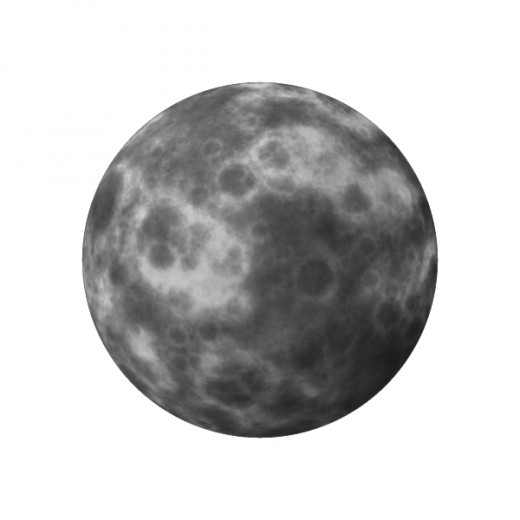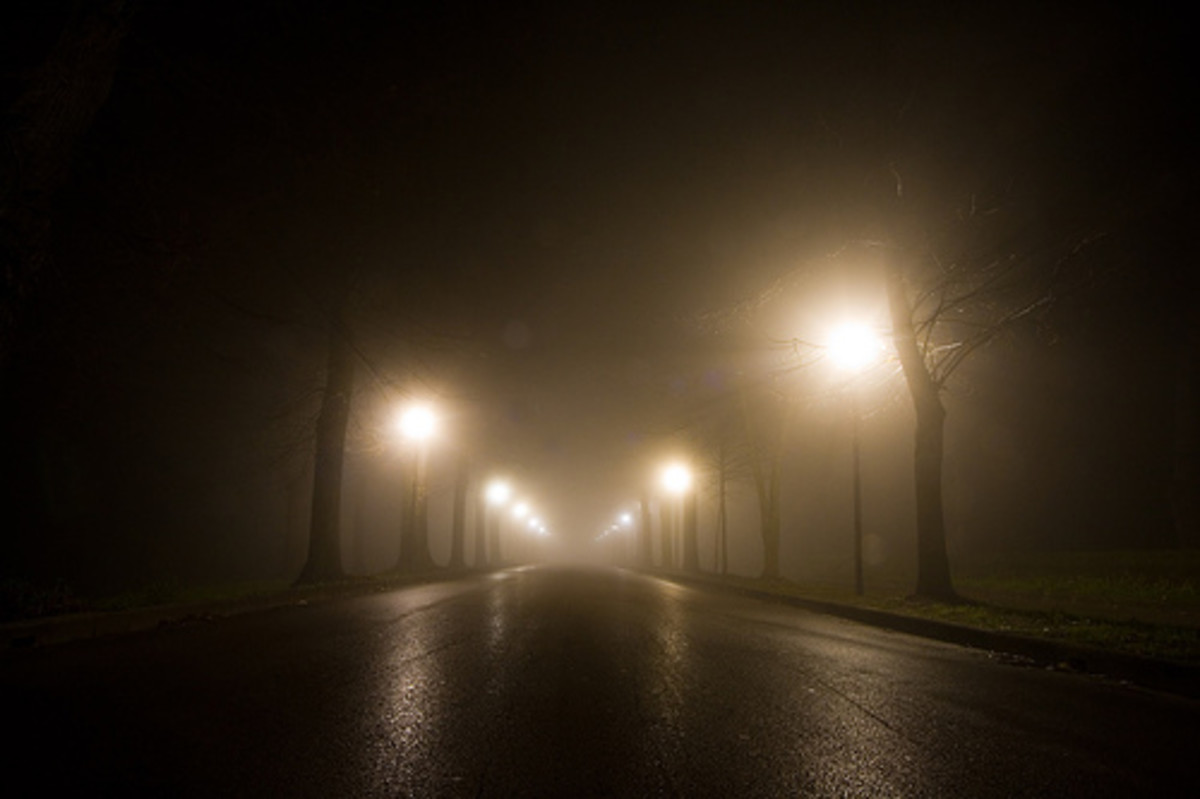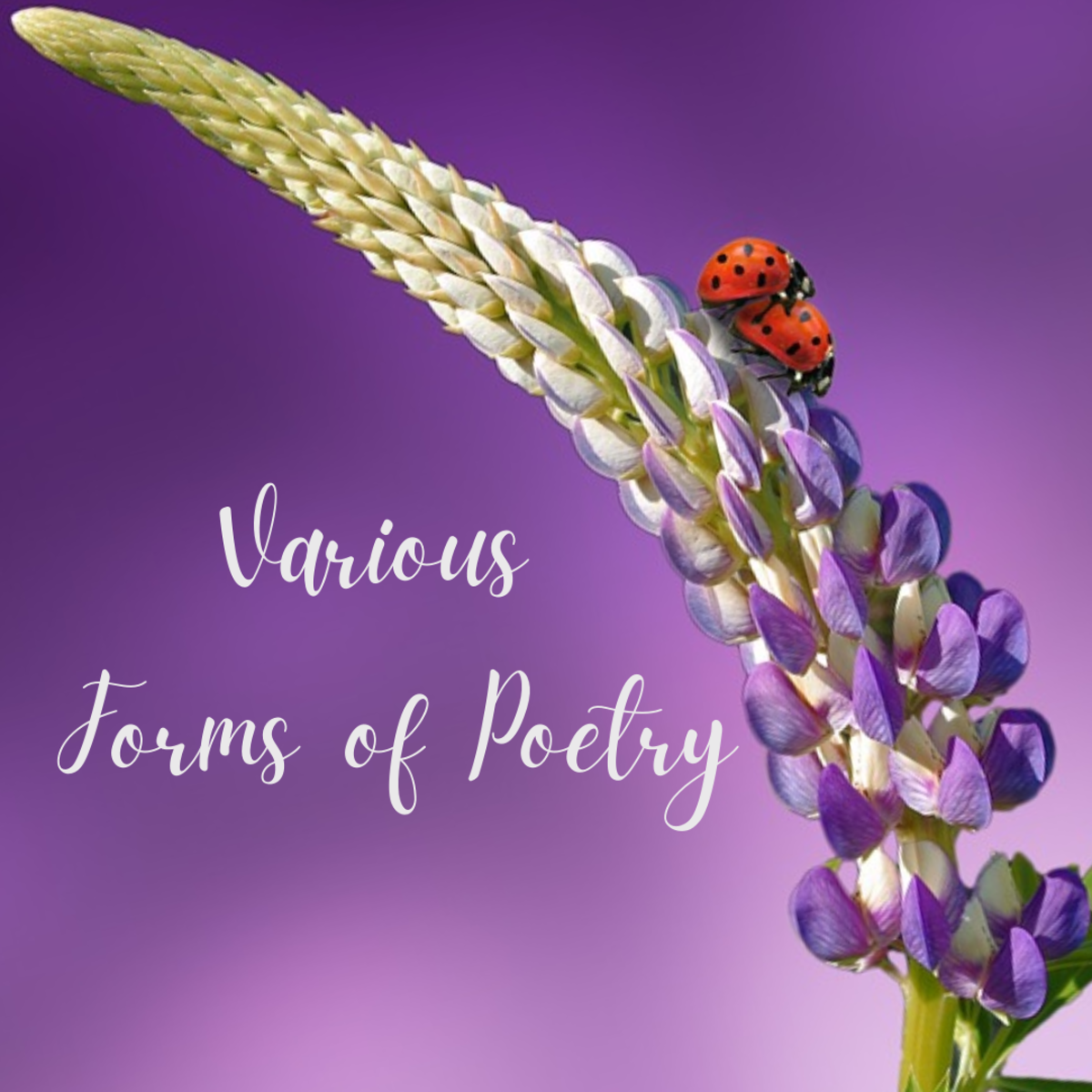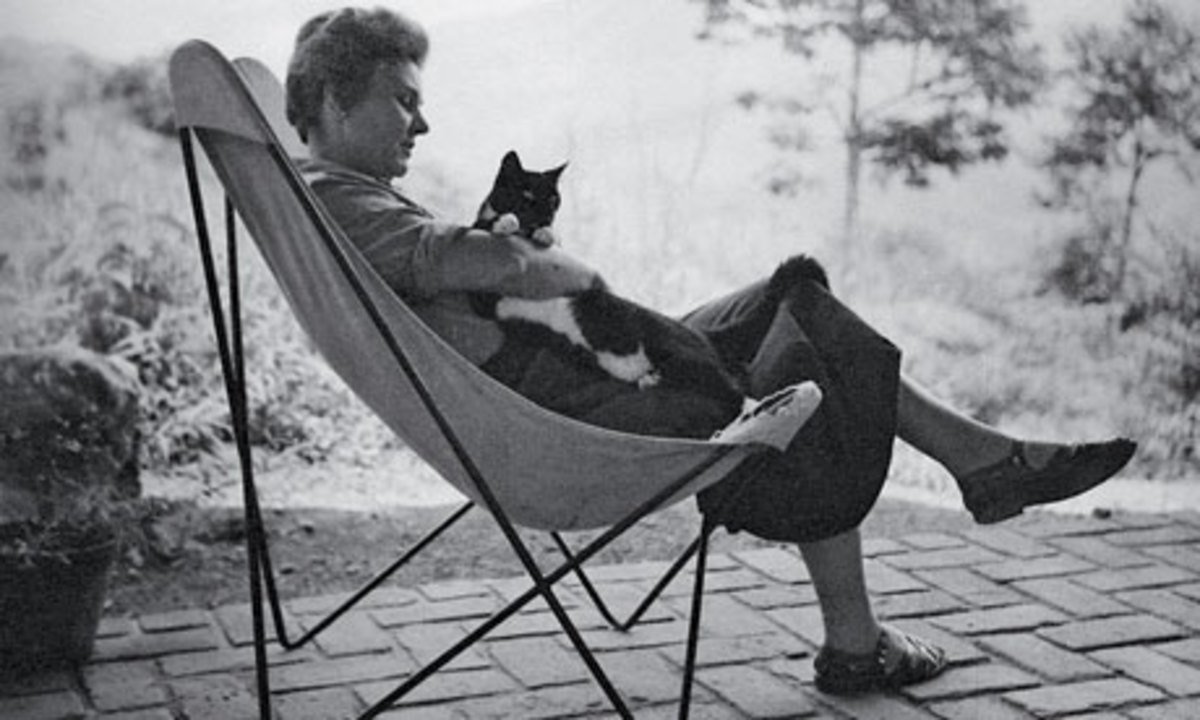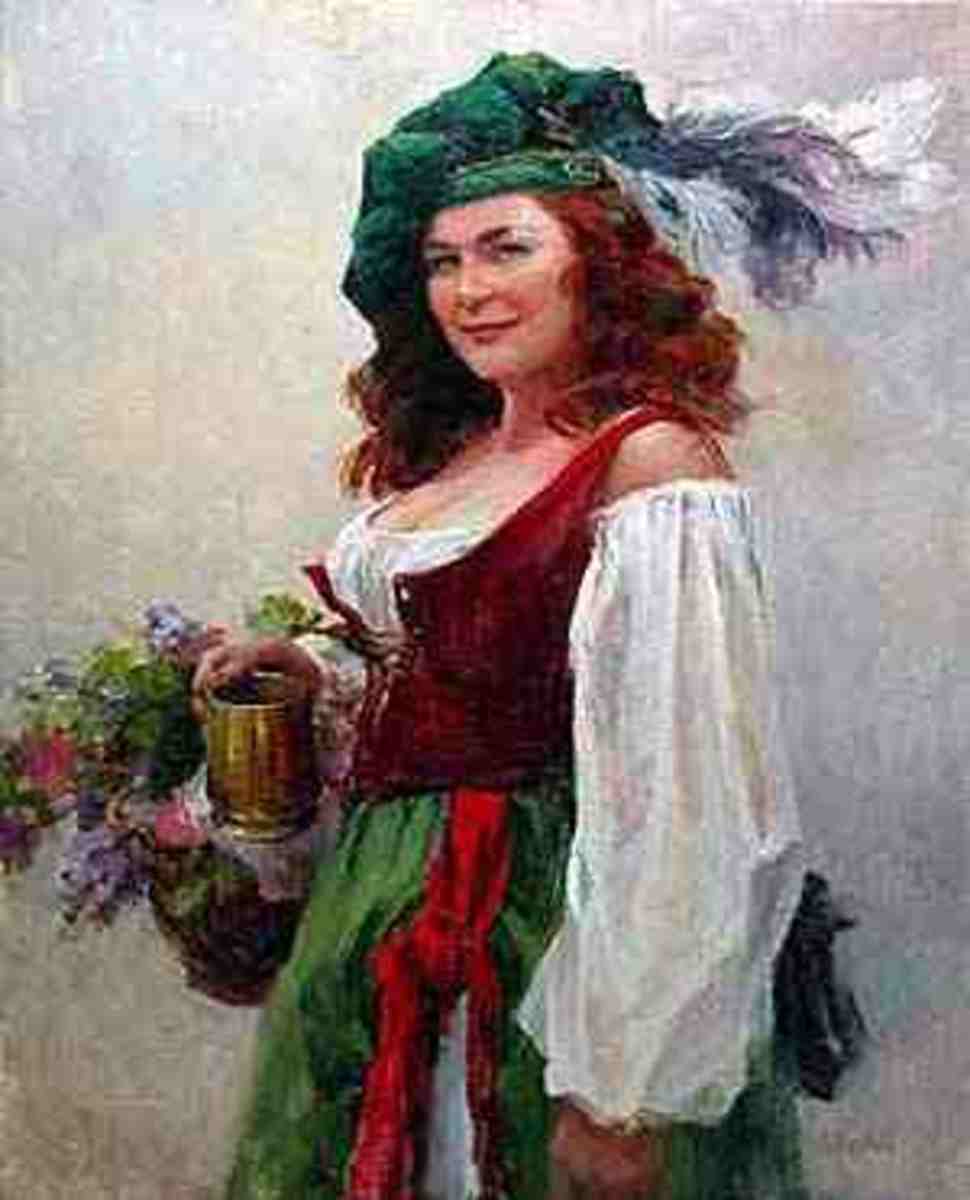How to Write a Sestina

Contents
- Introduction
- Spread of the Sestina
- Basic Sestina Form
- Famous Sestina #1: "Sestina" by Dante Alegheri
- Famous Sestina #2: "Altaforte" by Ezra Pound
- Famous Sestina #3: "Sestina" by Elizabeth Bishop
- Famous Sestina #4: "Farm Implements and Rutabagas in a Landscape" by John Ashbery
- How to Write a Sestina: Idea Development
- How Set Up a Sestina Poem
- Tips and Suggestions for Writing a Sestina
- Conclusion
- An Original Sestina: "The End..."
Introduction
Human beings love to sharpen their skills through facing challenges. Games and sports of all kinds are designed for the express purpose of building obstacles that require great mastery of skill to overcome. Indeed, learning to face adversity and conquer it is an essential pathway to the development of character and self-confidence. The love of challenge is also a central element of all forms of art. Painters, composers and choreographers actively set limitations on themselves just to see what they can create within them.
These experiences are no different for the poet. Over the centuries, poets have developed literally thousands of poetic forms in order to lay the ground rules for how a particular piece will be written. One of these is the sestina, traditionally held to have been developed by the 12th century troubadour Arnout Daniel! This article begins by providing an overview of the form along with brief introductions to four famous examples written by renowned poets:
- “Sestina” by Dante Alighieri (1265-1321)
- “Altaforte” by Ezra Pound (1885-1972)
- “Sestina” by Elizabeth Bishop (1911-1979)
- “Farm Instruments and Rutabagas in a Landscape” by John Ashbery (1927-present)
Using these famous examples as mentor texts, along with references to my own original example that appears at the end, the article then turns to providing instructions, suggestions and practical tools for how to write a sestina.
Spread of the Sestina
Traditionally attributed to the Occitan poet and troubadour, Arnout Daniel. (Occitan is a region near Toulouse in southern France.)
Author of "Sestina" (Late 13th Century) Famous Italian poet and author of The Divine Comedy, a central work in the literature of western civilization.
American expatriate poet Ezra Pound composed his "Altaforte" sestina in 1909, early during his time living in London.
American poet Elizabeth Bishop traveled much of the world, living in Brazil for fifteen years. During her time there, she wrote her famous "Sestina."
Ashbery composed "Farm Implements and Rutabagas in a Landscape" while living in New York.

Basic Sestina Form
The sestina is a seven-stanza poem in which the first six stanzas all have six lines followed by a concluding stanza of three lines. Both the challenge and the joy of writing a sestina rises from an established pattern of repetition in the end words for each line (see the table below).
Word Repetition Patterns by Stanza in the Classic Sestina
Stanza:
| Stanza Lines:
| Line Word Pattern:
|
|---|---|---|
Stanza 1
| 1, 2, 3, 4, 5, 6
| A, B, C, D, E, F
|
Stanza 2
| 1, 2, 3, 4, 5, 6
| F, A, E, B, D, C
|
Stanza 3
| 1, 2, 3, 4, 5, 6
| C, F, D, A, B, E
|
Stanza 4
| 1, 2, 3, 4, 5, 6
| E, C, B, F, A, D
|
Stanza 5
| 1, 2, 3, 4, 5, 6
| D, E, A, C, F, B
|
Stanza 6
| 1, 2, 3, 4, 5, 6
| B, D, F, E, C, A
|
Stanza 7
| 1, 2, 3
| A-B, C-D, E-F
|
Automatic End-Word Processor for Sestinas
Here is a link to a spreadsheet form I developed in writing my own sestina that automatically organizes the end words for each stanza once you put them in for the first one, making it easy to see and manipulate the overall structure of the poem.
The trick, then, is to find ways of creating your lines in such a way that the logic of the poem continues to flow while bringing new meaning to the end words each time they occur and keeping them from being noticed for the wrong reasons. Weaving words together in this way becomes a kind of complex poetical puzzle that can be both dreadfully frustrating and deeply satisfying all at once. Let’s take a look at what a number of professional poets have done with this over the centuries.


Dante Aligheri: "Sestina"
Here is a sestina in the form of a love poem by Dante, the famous poet of The Divine Comedy. In this piece, simply entitled “Sestina,” we see him masterfully craft a rumination on the beauty and power of unrequited love. The woman does not appear to be aware of the speaker’s admiration, but her effect on him is clearly profound.
Dante’s Selected End-Words: shadow, hills, grass, green, stone and woman.
As you read [click the link above], watch for:
- limited use of enjambment to create a natural flow in end-word meaning
- use of a wide variety of contexts to give the end-words new meaning on each repetition
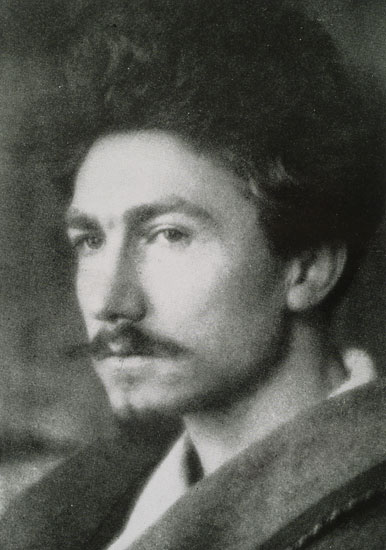
Ezra Pound: "Altaforte"
Pound’s sestina, “Altaforte,” while taking a vastly different thematic approach to the form, shares an interesting connection with the author of the last sestina, Dante. The voice in this poem is that of Bertrans de Born, a late 12th century French poet and troubadour who frequently wrote about war. Dante fictionally placed Bertrans de Born in hell in the first book of The Divine Comedy, The Inferno, for being one who liked to stir up conflict among men. The almost caricature-like presentation of Dante’s fictional Bertrans de Born that Pound provides here is both raucous and deeply entertaining.
Pound’s Selected End-Words: peace, music, clash, opposing, crimson and rejoicing.
As you read [click the link above], watch for:
- strong voice as created by the use of powerful—and sometimes colorful—language accented by repetition, occasional short sentences and numerous exclamation points
- the heavy use of listing and repetition to give many of the stanzas their internal structure
- the omission of “opposing” and “rejoicing” from the final stanza in order to better serve the meaning and momentum of the poem
- use of a wide variety of contexts to give the end-words new meaning on each repetition
The Definition of Enjambment:
Though not really a complex idea, “enjambment” is a term that was never clearly explained to me until I studied poetry in graduate school. Put simply, enjambment is when a poet breaks a unit of meaning in a sentence or phrase by placing a line break or a stanza break within it. Here is an example from my own poem, “The End.” Notice where the line breaks are indicated by the slash marks:
They whisper to the stars as if they know / how strange and marvelous a thing / it is to listen to these waves crash / against this shore, echoing / out across this wide and vacant world...
Notice how the meaning at the end of each line is continued into the beginning of the next. This is “enjambment.”
Elizabeth Bishop: "Sestina"
In classic contemporary style, Elizabeth Bishop’s “Sestina” presents a picture of a relatively mundane experience—a grandmother working in the kitchen around a child. By infusing this simple subject with rich imagery and thoughtful contemplation, however, Bishop crystalizes the moment, allowing her reader to see its multifaceted complexity with clarity. Each of her chosen end-words resonates more and more deeply with echoes of fate and the joys and sorrows of life.
Bishop’s Selected End-Words: house, grandmother, child, stove, almanac and tears.
As you read [click the link above], watch for:
- regular use of enjambment to create a sense of flow in the end-words
- regular use of imagery to give simple yet richly described sensory pictures of what is happening with the child and the grandmother
- the ever-increasing prophetic power of the almanac through the poem and how both the almanac and the stove become characters within the poem through careful personification
- the ways in which each of the last three lines leave the reader with profound questions and thoughts

John Ashbery: "Farm Implements and Rutabagas in a Landscape"
Where Bishop’s “Sestina” is an excellent example of contemporary style, Ashbery’s “Farm Implements and Rutabagas in a Landscape” is a classic post-modernist poem. Within it the reader sees a collection of characters from the Popeye cartoons gathered together and having a rather absurd conversation late in the afternoon in Popeye’s apartment. Odd twists in the events of the poem and the resulting conversation of the characters regularly pulls the reading experience right to the edge of significant meaning and then, like a magician’s sleight of hand, it shifts in a completely different direction, never quite landing on anything solid.
Ashbery’s Selected End-Words: thunder, apartment, country, pleasant, scratched and spinach.
As you read, watch for:
- regular use of enjambment to create a sense of flow in the end-words
- the odd juxtaposition of very natural and authentic dialogue in the midst of bizarre characters and situations
- the interweaving of almost prophetically suggestive lines with every-day conversation and even coarse bodily-function jokes

How to Write a Sestina-Idea Development
With a basic understanding of form in place and some experience considering the work of professional poets, it’s time to boil it down to tips, tricks and tools for how to write a sestina of your own.
In general, keep in mind that all of the professional examples presented here, along with my own original poem, are poems of contemplative reflection. The sestina’s form of strict repetition makes this both a strength and a necessity of the form. In every case, the six selected end-words lay at the center of this reminiscence, so choosing ones that share the right synergy of relationship and connotative meanings is centrally important.
One approach to this is to decide on a topic and then begin gathering word lists around that topic, thoughtfully considering the implications and possibilities of each word. A second approach—the one I took—was to purposefully choose related words with great flexibility and then follow them to where they lead, letting the words themselves eventually define the subject of the poem.
Either way you choose to go, there are a few points to consider as you make your choices:
- Words with multiple meanings, broad uses and even homonyms provide broad possibilities for interpretation.
EXAMPLE: sea & see or arrest & a rest
- Words that can be tagged on to the ends of other words can also be useful for the same reasons.
EXAMPLE: no, know, rhino, volcano, soprano, etc. or ring, coloring, daring, etc.
- The tone, interrelationships and connotative meanings suggested by each word you choose will significantly influence the character of your poem. Pay close attention to this and also watch for the ways in which these contrast or compliment one another from one word to the next.
How to Set Up a Sestina Poem
With your words chosen, it is now time to set up a framework for each of your stanzas. On paper, this can be done by simply laying out the last word in each stanza according to the chart given above. Alternatively, with the advent of computers, you can create a spreadsheet that will do this automatically (click here for a Google Docs spreadsheet I have already programmed for this purpose). I prefer this approach because it allows me to change the words and quickly and easily see how that will alter the layout across the entire poem.
Tips and Suggestions for Writing a Sestina
- use enjambment to improve flexibility and variety in how end-words are crafted
- think as broadly as possible about the possible meanings, uses and connotations of each end word
- the form can be altered slightly so long as it serves the greater movement of the poem
- repetition and listing are excellent ways to generate content for each stanza
- rich imagery is always beneficial to a poem
- the last three lines are a place to leave the reader with provocative statements, ideas or questions
- the traditional elements of figurative language (personification, alliteration, hyperbole, metaphor, etc.) are always useful tools
Conclusion
While this is all a lot to think about on first glance, writing a sestina is like many other things—it gets complicated in theory, but it’s much easier to manage in practice. The truth is that a sestina makes for a wonderful word game to play and each successful move brings great satisfaction even in the midst of the frustrating setbacks. Your eyes will open wider and wider with more and more practice. Give is a try, and don’t forget to have fun!

The End...
I sit on the soft red sand by the sea,
as the black waves whisper on this harvest-moon night.
They whisper to the stars as if they know
how strange and marvelous a thing
it is to listen to these waves crash
against this shore, echoing
out across this wide and vacant world. Echoing
echoing, echoing the visions I try not to see.
Please. Let me forget. But it’s too late; my memories crash
down, piercing me; their faces cut through the blindness of night,
sparing nothing,
fracturing all that I know.
No.
I can’t stop their voices from echoing,
but I must hold on to something—
something that will help me to see
my way through this eternal night
or everything we ever were will crash
into the black void of this place—crash
and be buried deep in the red, red sand. No.
I must endure yet another long black night.
I must face the dawn and send our voice echoing
out across the universe for another day. This night will not see
us come to nothing.
For I alone now stand for everything.
The Earth is gone. The rest have died in the crash,
and I am left here to listen to the whispers of an alien sea.
I, alone, am left to know
that mankind’s days of echoing
across time have come to face their final night.
I will not allow this night
to conquer us. I will not surrender everything
we have been to this black sea. One voice will echo
for one more day before I will crash
and crumble to dust. No.
I will stand. I will see
what one more black night staring at a sounding sea
will bring. And tomorrow’s dawn will know the thing
that kept us from crashing for so long, and sent our voices echoing across the universe.
Author’s Note: My thanks to the inspirational work of Ray Bradbury.

Source Pictures for "The End"
Click thumbnail to view full-size


Other Poetry Hubs by wayseeker:
- How to Write Lyric Poetry
This article provides a brief overview of lyrical poetry including the history of the lyric poem and a summary of the most common lyrical poetry forms. It also provides options for writing lyric poems along with specific suggestions and quick tips to - How to Write a Poem: Understanding Slant Rhyme
This hub covers how to write poetry using slant rhyme technique, also known as half rhyme. It includes three poetry exercises to get started along with two original sample poems by wayseeker. - William Wordsworth: An Unlikely Prophet of Emotiona...
William Wordsworth, through the words in his critical studies and world-renowned poetry, reveals how he had a stunning understanding of the importance of emotional intelligence and its relevance to intellectualism far before the modern psychological



